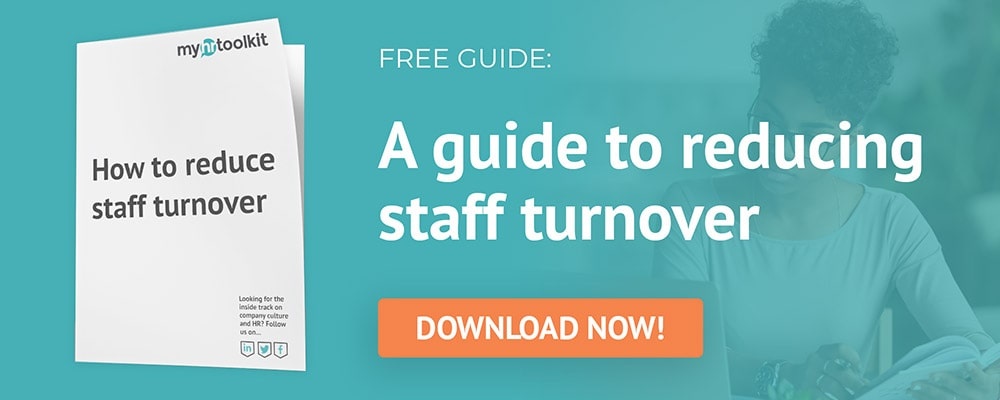In this four-part series, we explore the phenomenon of high staff turnover. These guides will help you learn how to identify and monitor your turnover rate, understand the effects a high turnover rate can have on businesses, the reasons for it, and the solutions.
Want the whole guide free and for keeps? You can download it here:
The reality of high staff turnover
High employee turnover can be a reality for many types of organisation, across multiple industries. It’s worth considering how a high staff turnover rate could impact your business – and how to address it.
Firstly, it’s good to establish whether you truly do have a high staff turnover rate. This all depends on context: your staff, your business, and the general landscape of your industry. Let's run through how to measure turnover rate and then examine how to decide when a turnover rate becomes damaging.
Measuring your staff turnover rate
Staff turnover can be measured using a percentage rate. The rate is expressed as the percentage of staff within an organisation who have left during a certain time (often a fiscal or calendar year). The calculation is as follows:
Staff turnover = Number of employees who left during the year ÷ average number of employees in the year (which is number of employees at the beginning of the year + number of employees at the end of the year ÷ 2).
For instance, say a business with 50 employees lost 5 staff but made 2 new hires within a year. This would leave 47 staff. Their turnover rate would be 10%, worked out like this:
50 + 47 ÷ 2 = 48.5
5 ÷ 48.5 = 0.1030927835
0.1030927835 x 100 = 10.3%
What is a high turnover rate?
A high turnover rate can vary between industries; certain sectors tend to experience more turnover than others. There tends to be a higher rate of turnover for unskilled positions than those requiring unique skill-sets.
For example, a telemarketing company may have a higher rate of turnover than an engineering company. This may mean the telemarketing company spends more time finding new staff; on the other hand, unskilled positions can be much easier to fill than specialist ones, so a higher turnover rate isn’t necessarily bad.
A good way to decide if a turnover rate is too high is to compare against competitors and other similar organisations if you can. Is your turnover rate significantly higher than theirs within a similar period? It may be the case that aspects of your company culture are having a negative effect on staff staying with your organisation.
Also, comparing your employee turnover rate year on year can help you see how it may have changed over time. For instance, myhrtoolkit provides a staff turnover report as part of an HR reporting suite, so it's easy to calculate turnover over time.
Understanding and addressing high staff turnover
We’ve written a series of guides to help you understand why you may have a high level of turnover within your business and how to address high staff turnover. Check out the following guides to find out more:
- The effects of high employee turnover. Examining the effects that a high turnover rate has on your business can help you identify the issues.
- The reasons for high staff turnover. As well as seeing the effects, identifying the underlying reasons for high turnover can be crucial for addressing it.
- The solutions for high turnover. In our final guide, find out how to address the causes for high staff turnover in your organisation and lower it effectively.
You can also download the entire staff turnover guide.
Here at myhrtoolkit, we understand that managing staff can be a time-consuming activity involving a lot of admin. Head over to our staff management system page to find out more about how HR software can help.

Written by Camille Brouard
Camille is a Senior Marketing Executive for myhrtoolkit who writes on topics including HR technology, workplace culture, leave management, diversity, and mental health at work.


 Holiday Planner
Holiday Planner Absence Management
Absence Management Performance Management
Performance Management Staff Management
Staff Management Document Management
Document Management Reporting
Reporting Health and Safety Management
Health and Safety Management Task Management
Task Management Security Centre
Security Centre Self Service
Self Service Mobile
Mobile




